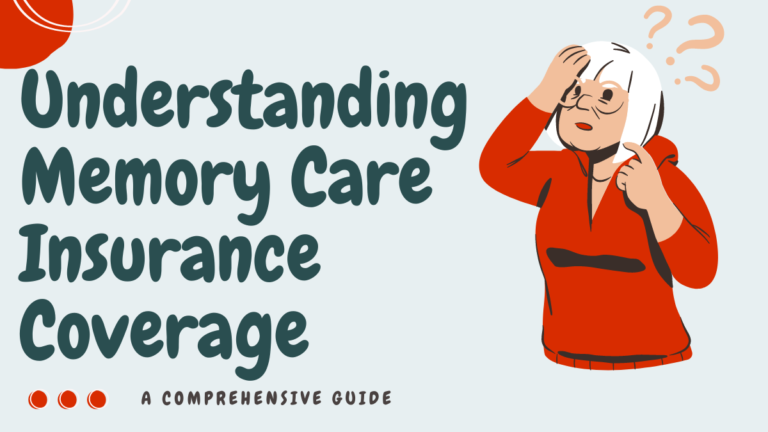Exploring Long-Term Care Insurance Costs for a 65-Year-Old: What to Expect

Are you approaching retirement age and concerned about the rising costs of long-term care? Well, you’re not alone. Long-term care insurance is becoming increasingly important for individuals aged 65 and above as they plan for their future needs.
But how much does it actually cost? In this blog post, we’ll take a deep dive into the world of long-term care insurance costs, giving you all the information you need to make an informed decision. So buckle up as we explore what to expect when it comes to covering your long-term care expenses!
Table of Contents
Introduction
A significant number of people over the age of 65 will require some form of long-term care (LTC) during their lifetimes, according to the U.S. Department of Health and Human Services. LTC includes a range of services designed to meet the health and personal needs of people who are unable to care for themselves for an extended period of time.

While LTC can be provided in a number of settings, including nursing homes, assisted living facilities, and in-home care, the majority of LTC is provided in nursing homes. Nursing home care is generally the most expensive type of LTC, and the cost of care can vary widely depending on a number of factors, including the type of facility, location, and the level of care required.
For example, according to data from Genworth Financial, the average annual cost of a private room in a nursing home in 2020 is $105,850. The average cost for a semi-private room is $92,328 per year.
Of course, these are only averages and your actual costs could be higher or lower depending on your specific circumstances. In addition, it’s important to remember that nursing home costs are generally covered by Medicare only for a limited time (usually 20 days). After that point, you would be responsible for paying all costs out-of-pocket unless you have long-term care insurance.
If you’re thinking about purchasing long-term care insurance, it’s important to consider the cost since policies are typically expensive. In this article, we’ll take a look at what you can expect to pay for long-term care insurance premiums if you’re 65 years old. We’ll also discuss some other factors to consider before purchasing a policy and provide helpful resources so that you can make an informed decision about your long-term care needs.
Understanding Long-Term Care Insurance Costs
As you age, the likelihood of needing long-term care services increases. With those services comes the cost of long-term care insurance. Here’s a look at what you can expect to pay for long-term care insurance as a 45-year-old.
The median cost of long-term care insurance is $2,700 per year, according to the American Association for Long-Term Care Insurance (AALTCI). But, your costs will vary based on a number of factors, including your age, health status, and coverage choices.
For example, a healthy 45-year-old man can expect to pay about $1,500 per year for a policy that provides $163,500 in coverage, while a 45-year-old woman with diabetes would pay about $3,400 per year for the same policy, according to the AALTCI.
Your health status is just one of the factors that will affect your long-term care insurance costs. Other important considerations include:
- Coverage choices – The benefits you choose will have an impact on your premiums. For example, a policy with smaller benefit amounts and shorter benefit periods will generally have lower premiums than a policy with higher benefits and longer benefit periods.
- Inflation protection – Many policies offer some form of inflation protection to help keep your benefits from diminishing over time. This protection may come at an additional cost.
- Discounts – Some insurers offer discounts for couples and for members of specific organizations.

Finally, keep in mind that long-term care insurance policies have a variety of exclusions and limitations, which you should carefully consider before purchasing a policy.
Factors that Affect Cost for a 65-Year-Old
As you research long-term care insurance costs, you’ll quickly discover that there are many factors that can affect the price of a policy. Some of these factors are within your control, such as your age and health status, while others are out of your hands, like where you live.
For a 65-year-old, some of the most important factors that will affect the cost of long-term care insurance include:
- Age: As with most types of insurance, your age is one of the biggest factors that insurers look at when setting premiums. The older you are, the higher your rates will be.
- Gender: Women tend to live longer than men, so they’re typically charged higher rates for long-term care insurance.
- Health Status: If you have any pre-existing health conditions or if you smoke cigarettes, you can expect to pay higher premiums for your coverage.
- Where You Live: Long-term care costs vary depending on where you live. For example, nursing home care is more expensive in urban areas than it is in rural areas.
These are just a few of the many factors that can affect the cost of long-term care insurance for a 65-year-old. Work with an experienced agent to get an accurate idea of what you can expect to pay for coverage.
Common Types of Long Term Care Insurance
There are four common types of long-term care insurance: health maintenance organizations (HMOs), preferred provider organizations (PPOs), private fee-for-service plans (PFFSs), and point-of-service (POS) plans.
With an HMO, you pay a monthly premium and a small copayment for each office visit or service. Services are provided by a network of doctors and other providers who have agreed to participate in the plan. HMOs typically don’t cover services provided outside of the network.
A PPO also involves paying a monthly premium, but you can see any doctor you want without getting a referral from a primary care physician. You’ll pay more out of pocket if you see a doctor who isn’t part of the PPO network, but it may be worth it for the flexibility.
PFFS plans aren’t connected to any particular provider network. You can choose your own doctors and hospitals, as long as they accept the terms of the plan. With this type of long-term care insurance, you might have to pay more for services than you would with an HMO or PPO.
POS plans are similar to PPOs, but with a POS plan, you must select a primary care physician from the plan’s network. You can see specialists without getting a referral from your primary care doctor, but you’ll pay more if you don’t.
Budget Planning and Rates Considerations
As you budget for long-term care insurance, consider the following:
The average national monthly rate for a private nursing home room is $7,698, according to Genworth’s 2018 Cost of Care Survey.
Assisted living facility rates vary by state, but the national average monthly rate is $4,000, according to the same survey.
Home health aides cost an average of $21 per hour nationwide, or about $168 per day for eight hours of care, according to data from the 2018 Annual Income and Employment Report compiled by Home Instead Senior Care.
You can get discounts on your premiums if you and your spouse both buy policies, or if you purchase a policy before you turn 55.
Coverages, Benefits and Costs for a 65 Year Old’s Policy
As you age, the chances of needing long-term care increase. Long-term care is a type of care that helps with daily activities such as bathing, dressing, and eating. It can be provided in different settings, such as your home, an assisted living facility, or a nursing home.
The cost of long-term care can be expensive, but there are ways to help pay for it. One way is to purchase a long-term care insurance policy. A long-term care insurance policy is a type of insurance that helps pay for the costs of long-term care.
There are many different types of long-term care insurance policies available, and the costs will vary depending on the type of policy you choose. For example, some policies will cover the cost of in-home care, while others may only cover the cost of an assisted living facility or nursing home.
In order to get an idea of how much a long-term care insurance policy would cost for a 65 year old, we’ve gathered quotes from three leading insurers. The following table outlines the coverage, benefits, and costs for each policy:
Comparison Shopping: What to Consider When Choosing an Insurer?
When you’re shopping around for long-term care insurance, it’s important to compare apples to apples. That means taking a close look at the policies being offered and making sure you’re comparing the same features.
Some things to consider when shopping for long-term care insurance:
- The daily benefit amount. This is how much the policy will pay per day for long-term care services. The higher the benefit amount, the more expensive the policy will be.
- The elimination period. This is the length of time you’ll have to pay out of pocket for long-term care services before the policy kicks in. A longer elimination period will mean a lower premium, but make sure you can afford to pay for long-term care out of pocket for that length of time if you need to.
- The coverage period. This is how long the policy will pay out benefits. Some policies have unlimited coverage, while others have a set number of years they’ll pay out benefits. Choose a policy with a coverage period that meets your needs.
- Inflation protection. This feature helps keep your benefit amount level with inflation, so it keeps pace with the rising costs of long-term care over time. It’s an important feature to have, but it will add to the cost of your policy.

Conclusion
With these tips, exploring long-term care insurance costs for a 65-year old should be much easier. Your age plays a huge factor in determining your premiums, so remember that the younger you are when looking into coverage the better. As always, make sure you do your research and understand what kind of coverage you need before signing up with any policy provider. That way, you can find a great plan that meets all of your needs and fits into your budget!






